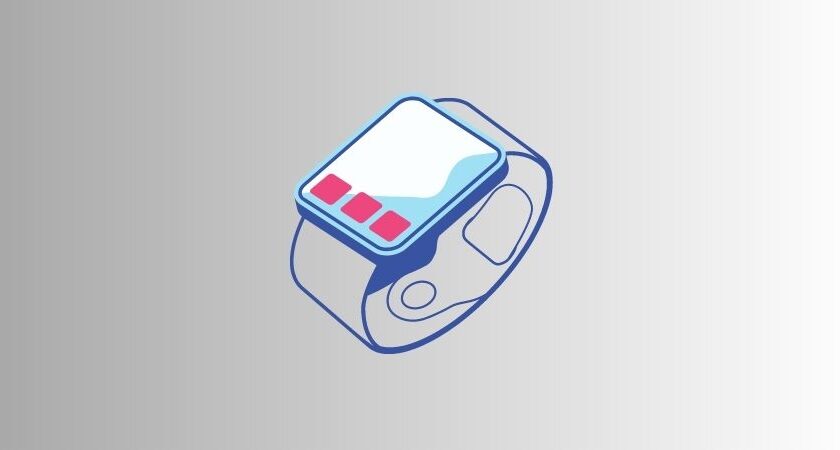In recent years, wearable technology has witnessed a surge in popularity, transforming the way we interact with and track our health and daily activities. Initially focused on consumer fitness and wellness, wearable devices such as fitness trackers, smartwatches, and health monitors have now found their way into workplaces.
These innovative devices offer numerous implications for employee health and productivity, revolutionizing the traditional approach to workplace wellness and performance management. In this blog, we will explore the potential benefits and challenges of wearable technology in the corporate world and its impact on employee well-being and productivity.
Monitoring Employee Health and Wellness
One of the most significant implications of wearable technology in the workplace is the ability to monitor employee health and wellness continuously. Fitness trackers and health monitors can track vital signs, such as heart rate, sleep patterns, and stress levels, providing valuable insights into an employee’s overall health.
With this data, employers can identify potential health issues early on and encourage employees to adopt healthier lifestyle habits, ultimately reducing absenteeism and healthcare costs.
Encouraging Physical Activity and Wellness
Sedentary behavior is a common problem in office settings, leading to various health issues and reduced productivity. Wearable devices can serve as powerful tools to promote physical activity and wellness among employees.
Many devices have built-in activity reminders, encouraging individuals to take short breaks and engage in light exercise. Companies can implement wellness programs based on wearable technology data, fostering a more active and health-conscious workforce.
Stress and Mental Health Management
Beyond physical health, wearable technology can also contribute to managing stress and mental well-being. Some advanced devices offer stress tracking and relaxation exercises, helping employees become more aware of their stress levels and providing coping strategies. Additionally, employers can analyze this data to identify workplace stressors and create a healthier work environment.
Enhancing Workplace Safety
In industries where employees are exposed to hazardous environments, wearable technology can significantly enhance workplace safety. For instance, smart helmets equipped with sensors can monitor vital signs and detect potential accidents in real-time, enabling immediate responses to prevent severe injuries. This use of technology creates a safer work environment, reducing the number of workplace accidents and subsequent compensation claims.
Improving Employee Engagement
Wearable technology can boost employee engagement and motivation through gamification elements. Many wearables include challenges, leaderboards, and rewards, turning health and wellness into a fun and competitive activity. Employees may feel encouraged to participate actively in corporate wellness programs, fostering a sense of community and camaraderie among colleagues.
Personalized Productivity Management
With the help of wearable devices, companies can collect data on employee work patterns, analyze productivity trends, and identify potential inefficiencies. Armed with this information, employers can offer personalized strategies to optimize individual and team performance.
For example, if an employee shows reduced productivity during specific hours, the employer may suggest tailored breaks or schedule adjustments to maintain peak performance.
Work-Life Balance Facilitation
Wearable technology can play a role in promoting work-life balance by helping employees manage their time effectively. Smartwatches and productivity trackers can assist in time management, setting reminders, and prioritizing tasks. Employees can use this technology to maintain boundaries between work and personal life, reducing burnout and improving overall well-being.
Challenges and Considerations
While the implications of wearable technology for employee health and productivity are promising, several challenges and considerations need to be addressed:
- Data Privacy and Security: Collecting sensitive health and performance data raises concerns about privacy and data security. Employers must implement robust policies to protect employees’ personal information and ensure transparency regarding data usage.
- Employee Consent: Implementing wearable technology in the workplace must be voluntary, with employees providing explicit consent for data collection and usage. Consent should not be tied to performance evaluations or promotions to avoid potential ethical dilemmas.
- Data Interpretation: Interpreting and acting upon the data generated by wearable devices require expertise and careful analysis. Employers should collaborate with healthcare professionals to ensure accurate interpretation and appropriate action plans.
- Overreliance on Technology: While wearable technology can enhance wellness and productivity, it should not be a substitute for a supportive work culture and well-designed wellness programs.
Conclusion
Wearable technology holds tremendous potential for revolutionizing workplace wellness, employee health, and productivity. By providing valuable health insights and encouraging healthy behaviors, these devices can create a more engaged, healthier, and productive workforce.
However, it is crucial for employers to approach the implementation of wearable technology with sensitivity to data privacy, employee consent, and the limitations of technology. When used responsibly, wearable technology can be a valuable tool in fostering a culture of well-being and excellence in the modern workplace.
